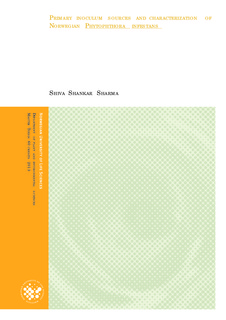Primary inoculum sources and characterization of Norwegian Phytophthora infestans
Master thesis

View/
Date
2013-09-23Metadata
Show full item recordCollections
- Master's theses (IPM) [204]
Abstract
Late blight caused by Phytophthora infestans (Mont.) de Barry is a major constrain to potato production in Norway. To characterize present populations of P. infestans and to find potential inoculum sources for early epidemics of late blight in Norway, P. infestans infected samples were collected from 10 different farms of Norway. 237 plant samples were collected in early epidemic. At least 68 recovered isolates from leaf samples were used for testing of their mating type, metalaxyl and propamocarb resistance. In addition, at least 187 samples were analyzed using simple sequence repeat (SSR) method. The majority (62 of 68) of the isolates were of the A1 mating type. Among 67 tested isolates, 32% of the isolates were found resistant against metalaxyl while about 48% of isolates were sensitive. In Norway, propamocarb resistance in P.infestans was detected for the first time in two isolates though most of the isolates (73%) were intermediate resistance. Thirty alleles and 66 multilocous genotypes were detected among 191 samples by using 6 pairs of SSR markers (Pi02, Pi04, Pi4B, PiG11, Pi26, and Pi33). A previously never detected allele 146 of PiG11 was detected. The diversities among farms were quantified by a normalized Shannon’s diversity index (Hs). Moderately high variability among 10 farms and clustering pattern of isolates according to their corresponding farms (except some farm) indicates the primary inoculums came through seed tubers carrying inoculums.